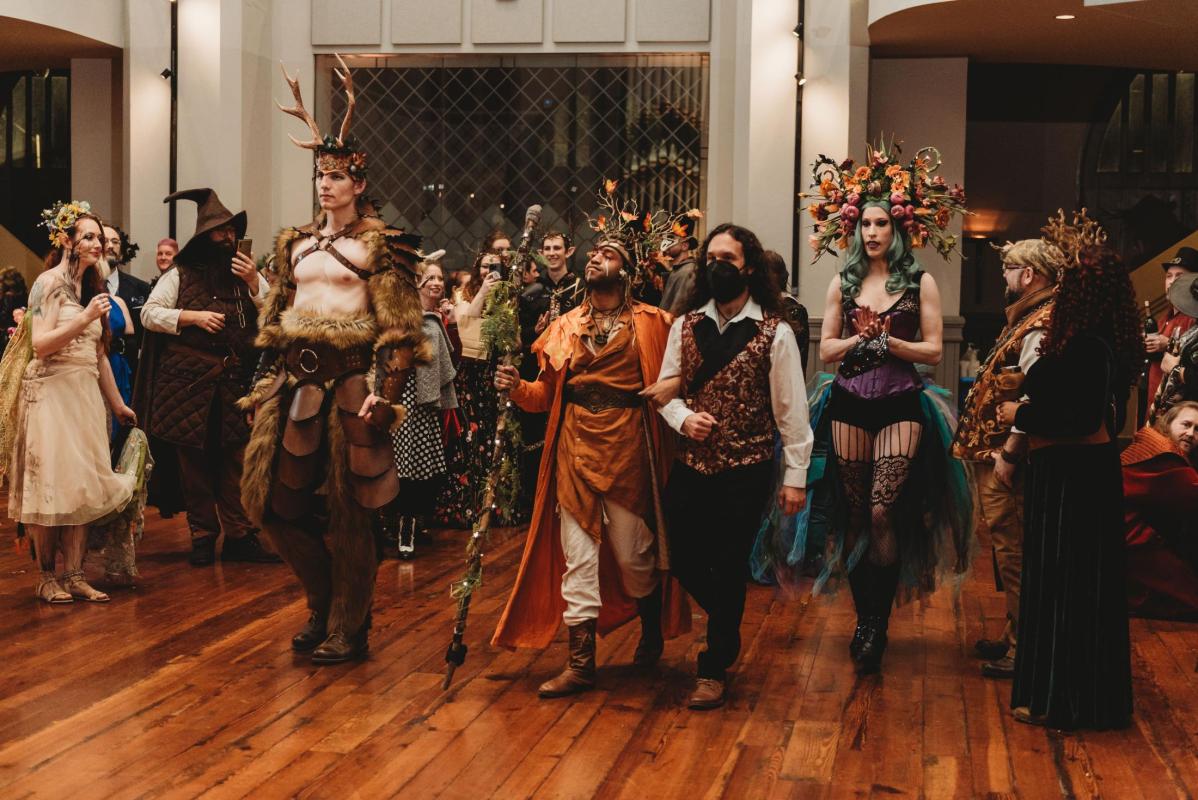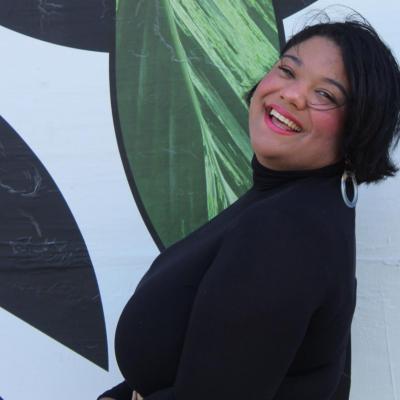
In the late ‘90s, while juggling work as a teacher and raising her children, single mom Nina Amaya was spread thin and fighting depression.
“It was hard making ends meet,” she says. “I had two boys who deserved a happy mom, but that’s not what they had.”
When her doctor advised her to take one night per week to do something for herself (yes, that was the actual prescription), she started taking belly dancing classes. Eventually, she took her dancing (and later, stilt-walking) skills to local faerie festivals and became a regular at the fantastical events throughout the decades. As a lover of “imagination, art, and stories,” and someone who “always felt comfortable with imaginary friends,” she was able to foster a special connection within that community.
But it wasn’t until 2015, after Freddie Gray was killed, that Amaya was inspired to organize her own faerie fest. She wanted to create a gathering that promoted peace and creativity: “Baltimore City was getting this rap about violence and protests,” she says. “But there’s magic here, too. We needed to be celebrating Baltimore art, inclusivity, and diversity.”
In the eight years since, the Baltimore Faerie Faire has continued to do just that with costumes, live music, dance, artwork, and local vendors. Following a dip in resources, the event’s Spring Fairy Ball went on hiatus last year, but it’s officially returning to the 2640 Space in Charles Village on Saturday, April 22 from 6-11 p.m. During that time, costumed attendees will sip wine and enjoy music from several live dance groups including 27th Street Klezmer Band, Clipper City Combo, Pirates for Sail (because faeries and pirates are known to cause mischief together,) and one-man-band Maugorn the Stray.
There will also be a silent auction to benefit Blue Water Baltimore (the event conveniently overlaps with Earth Day,) and, per tradition, guests will partake in a costume parade. They will also watch the faerie court crown its new rulers—which Amaya ensures are a mix of kings and queens of all backgrounds each year.
It’s one small example of how the event prioritizes inclusivity in the local faerie scene—which, unfortunately, hasn’t always been welcoming to all. Faerie Faire king J’vonte Lee—a queer, Black leader in the DMV fantasy community—grew up without diverse representation in the mythical space, and at times encountered racism from fellow fandom members.
“I used to roleplay as a Black elf on virtual platforms and people would say, ‘This is not for Black people. You need to change your skin tone. Elves are supposed to be white,’” he shares. Both on the internet and in the real world, “Everyone was always trying to give me a history lesson, whether or not they were brave enough to say it to my face.”
Lee credits Amaya with giving him a platform to help diversify the faerie community in Baltimore as the fair’s Elven King—which led him to launch RealmScape, a festival that celebrates regional BIPOC and LGBTQIA+ fans of fantasy. Taking place this year at the Cahill Recreation Center in Northwest Baltimore on April 28 and 29, the lineup of events throughout the weekend includes live music, vendors, panelists, performers, indoor swimming, and an after party.
While the local fantasy community has room to grow, especially in terms of representing folks of color, the work that Lee and Amaya are doing is making noticeable strides.
“[Ours is a very] welcoming community,” says elder faerie Jude Asher, 71, who will be serenading guests in Yiddish, passing out barrettes and wands, and serving as a court member at Saturday’s event. “It’s colorblind, size-blind, age-ignorant. We don’t care. You look fabulous, therefore, you are one of us.”
Aside from the necessary improvements regarding diversity, equity, and inclusion, the mission of the local fae—a term used to describe creatures including ogres, merfolk, faeries, and gnomes—community as a creative outlet remains largely the same as it did when Amaya was a teenager in the ‘70s.
“The first faeries I ever saw were at Artscape, and they were fascinating to me,” she says, referring to an Instamatic picture that she took of them and still keeps in an album. “Faeries are as real as you make believe they are. It’s very freeing in a sense.”
It isn’t lost on Amaya that she is able to continue the tradition in a city like Baltimore, where quirky subcultures are embraced and celebrated.
“Baltimore is full of weirdos, and it’s wonderful,” she says. “In the ’70s, there was this little yellow pin that a lot of us wore that said ‘Baltimore Weirdos.’ I don’t remember where that came from, but I took it to heart. Frank Zappa and David Byrne are weirder for their time here.”
